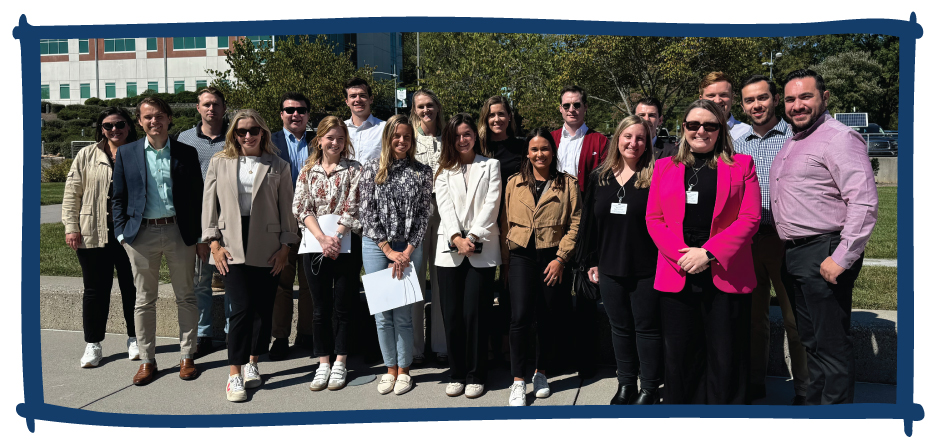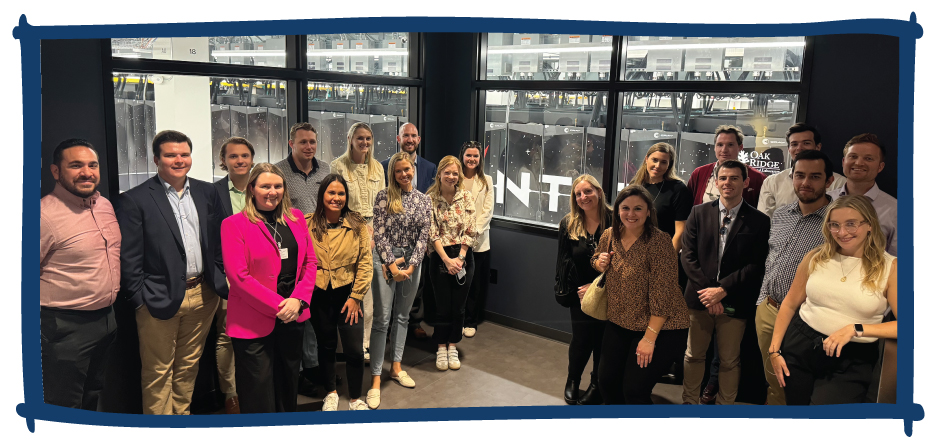Posted on October 10, 2024 by Frances Wetherbee and Natalie Houghtalen
Supporting research and development accelerates American innovation to reduce global energy emissions. America’s innovation engine is critical in the development and deployment of new technologies and empowers U.S. private sector innovators to partner with National Labs to make breakthroughs in clean energy technologies. In the heart of Tennessee, ClearPath hosted its fourth Clean Energy Innovation Academy (CEIA) site visit for Congressional staff at Oak Ridge National Lab (ORNL). CEIA, launched in 2020, is an ongoing educational series for Congressional staff focused on conservative clean energy technology and policy.

From Left to Right: Elizabeth Joseph, Shawn Rusterholz, Taylor Tougaw, Maddie Mitchell, Josh Weber, Anna Claire Stietenroth, Justin Williams, Katherine Robbins, Dillyn Carpenter, Frances Wetherbee, Bridget Dunn, Athina Lawson, Luke Nickless, Amanda Sollazzo, Ari Boosalis, Emily Johnson, Jake Kincer, David Maestas, Aaron Trujillo
The educational visit brought 12 U.S. House of Representatives staff, consisting of professional staff who worked for Members on the House Science, Space, and Technology and Budget Committees as well as legislative and communications staff who work for Members of House Ways and Means, Natural Resources, the Congressional Western Caucus and Committee on Appropriations to see first hand the exciting work happening at one of the U.S. National Labs.
The delegation toured ORNL, the Department of Energy’s (DOE) largest multidisciplinary laboratory. This laboratory delivers scientific discoveries and technical breakthroughs, including scaling up clean energy in the U.S. and accelerating innovation that strengthens economic competitiveness. On campus, ClearPath and Congressional staff toured:

From Left to Right: Aaron Trujillo, Josh Weber, Shawn Rusterholz, Emily Johnson, Taylor Tougaw, Athina Lawson, Dillyn Carpenter, Katherine Robbins, Niko McMurray, Anna Claire Stietenroth, Frances Wetherbee, Amanda Sollazzo, Elizabeth Joseph, Bridget Dunn, Luke Nickless, Ari Boosalis, Justin Williams, David Maestas, Jake Kincer, Maddie Mitchell
The MDF is at the forefront of advanced manufacturing techniques and enables researchers and industry partners to collaborate on manufacturing processes, making them faster, more affordable, and more efficient. Staff saw the cutting-edge work of the facility in processes like additive manufacturing and 3D printing which will drive the development of next-generation materials for the clean energy sector and beyond.
TRIstructural ISOtropic fuel is an advanced nuclear fuel that has certain safety and performance characteristics that make it more robust than traditional nuclear fuel. This fuel is used in several advanced reactor designs, such as those supported by the Advanced Reactor Demonstration Program and the Department of Defense’s Project Pele. The lab’s research has been instrumental to the safety case and the manufacturing process of TRISOU fuel, supporting ambitious goals set by Congress to power new nuclear reactors with a secure American fuel supply chain.
Originally constructed in the 1960s, the HFIR remains one of the most powerful research reactors in the world. It is a critical source of isotopes for medical, industrial and scientific purposes. Due to its extremely high neutron flux, the reactor also plays an important role in materials and medical research. Staff learned how neutron research at HFIR was key to characterizing COVID-19. The facility’s abilities in both isotope production and neutron research make it indispensable for materials development, nuclear energy and medicine.
The group was able to take a look at the world’s fastest supercomputer, Frontier, which is a resource to companies and programs working on the next generation of innovation, giving them a competitive advantage. The computer solved calculations more than five times faster than today’s top supercomputers—exceeding a quintillion, or a billion billion, calculations per second—exascale systems will enable scientists to develop clean energy technologies, among others.
Staff also joined a dinner discussion with guest speakers detailing how their partnerships with the U.S. National Labs’ R&D user facilities are moving their technologies toward commercialization. Guest speakers included:
ClearPath looks forward to expanding its Clean Energy Innovation Academy in 2025 to learn about more clean energy innovation technologies and the policies that will help them succeed.
